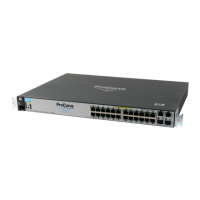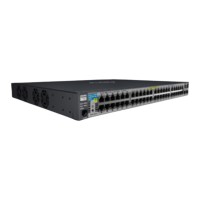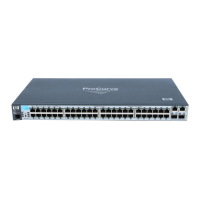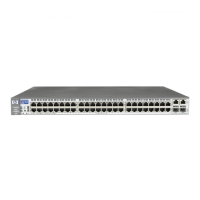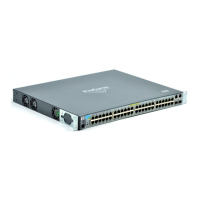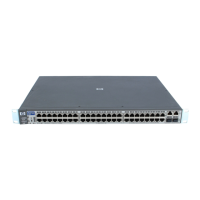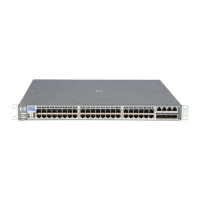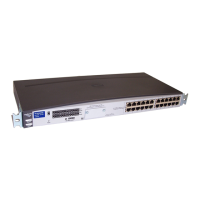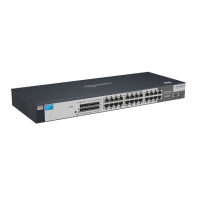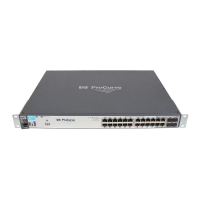Troubleshooting
Using Logging To Identify Problem Sources
For example, on a switch where there are no SyslogD servers configured, you
would do the following to configure SyslogD servers 18.120.38.155 and
18.120.43.125 and automatically enable Syslog logging (with user as the default
logging facility):
ProCurve(config)# logging 18.120.38.155
ProCurve(config)# logging 18.120.43.125
ProCurve(config)# write mem
ProCurve(config)# show config
logging < syslog-ip-addr
> configures the Syslog
Startup configuration:
server(s) to use and
enables Syslog debug
logging. (In this case,
; J9085A Configuration Editor; Created on release #R.11.XX
Syslog is automatically
enabled because debug
hostname "ProCurve Switch 2610-24"
The configured Syslog server
destination logging has
ip default-gateway 10.0.8.1
IP addresses appear in the
not been previously
logging 18.20.38.155
switch’s configuration file.
disabled with other Syslog
logging 18.129.43.125
servers already
snmp-server community "public" Unrestricted
configured in the switch.
vlan 1
(Refer to the Syntax box
name "DEFAULT_VLAN"
under “Configuring the
Switch To Send Debug
untagged 1-28
Messages to One or More
ip address dhcp-bootp
SyslogD Servers” on page
exit
C-27.)
ProCurve(config)# show debug
This command shows that
Syslog logging is enabled for
Debug Logging
the listed IP addresses.
Destination:
Logging - -
18.120.38.155
Default Logging Facility
18.120.43.125
Facility = user
Enabled debug types:
event
Figure C-9. Example of Configuring and Enabling Syslog Logging
To use a non-default logging facility, such as lpr, in the same operation as in
figure C-9, you would use this command set:
ProCurve(config)# logging 18.120.38.155
ProCurve(config)# logging 18.120.43.125
ProCurve(config)# logging facility lpr
C-28
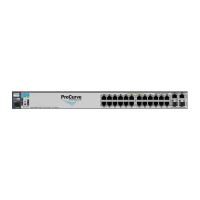
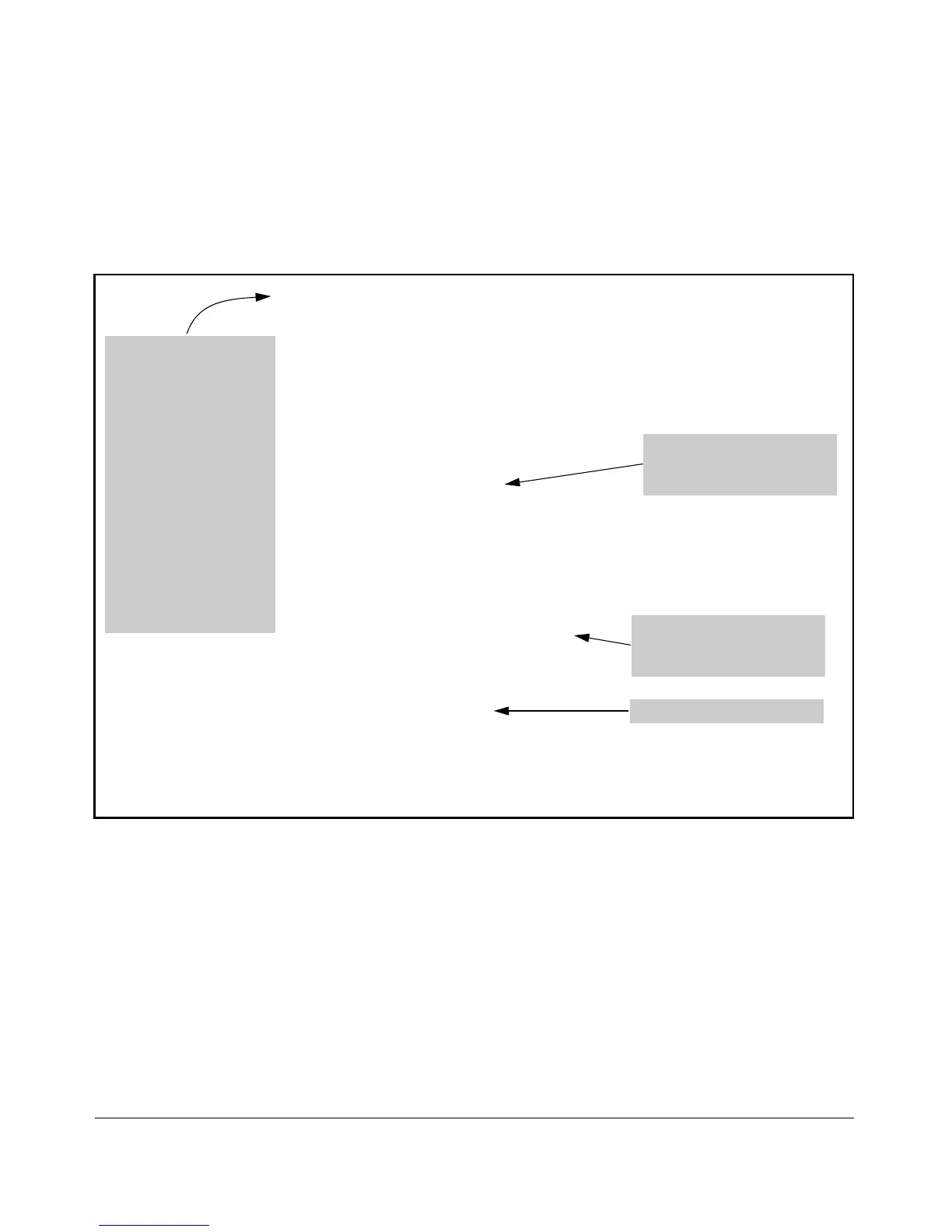